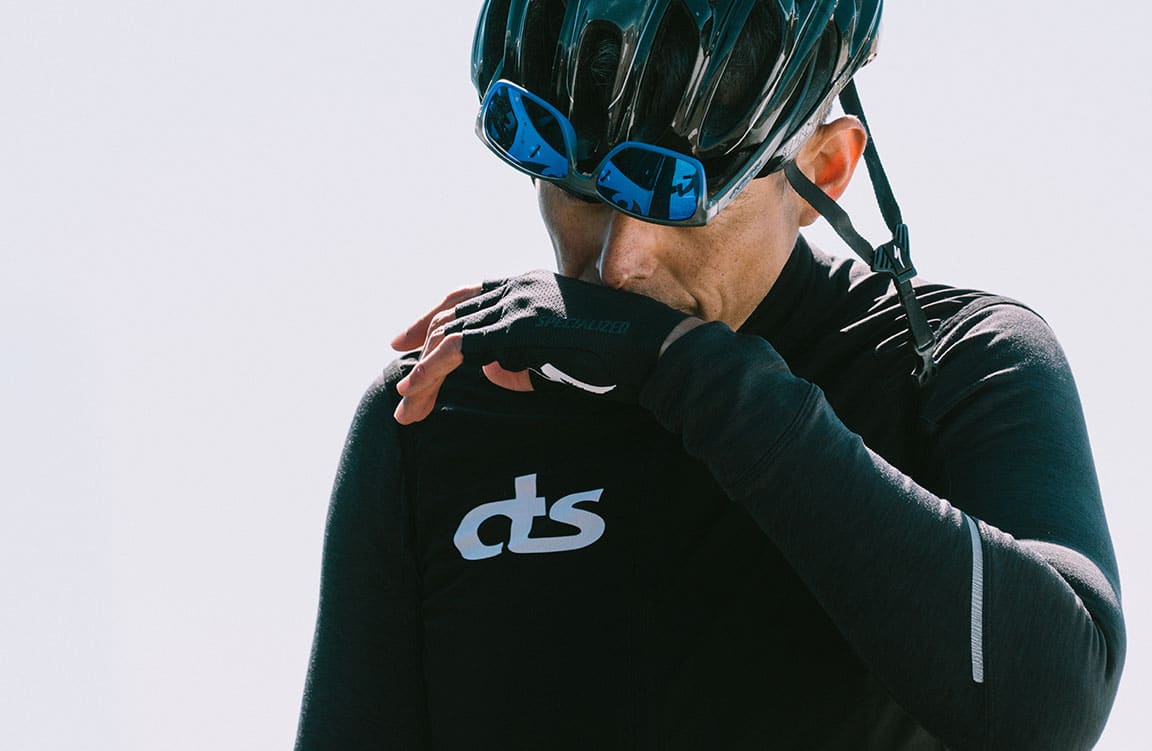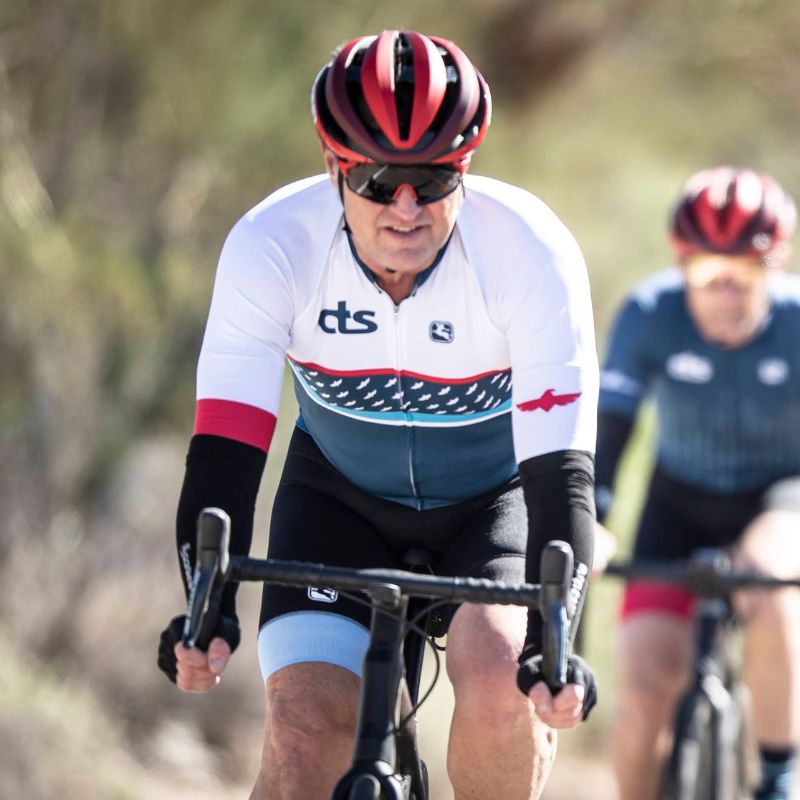
The 4 Worst Ways Cyclists Sabotage Their Training
By Chris Carmichael,
CTS Founder and Chief Endurance Officer
Often, the best thing cyclists can do is get out of their own way. I’ve been coaching amateur and elite athletes for more than 30 years. People have more access to quality training plans and performance data than ever before. But it takes more than a sound training plan for cyclists to achieve their potential. Cyclists sabotage themselves in many ways, on and off the bike. Fix these behaviors and you’ll reap greater benefits from your training.
Ride too much
People’s lives and activities may be getting back to normal (gym memberships and concert ticket sales are up, Peloton sales are down), but many cyclists who increased cycling volume during the pandemic are still cranking out big miles. That’s not a bad thing. It’s great to see cyclists spend more time on their bikes. Just don’t forget to rest.
A day off or a recovery ride every 7-10 days is a good start, but now we’re seeing people who have not taken a substantial rest period in the past two years. On the macro scale, individual rest days can’t compensate for the cumulative training load over a full year, let alone two.
Cyclists who track their training with TrainingPeaks, Strava, etc. don’t like to see their numbers drop. When you back off training volume and intensity for a 3-4 week period, fitness will drop, but that’s necessary to open up the opportunity to exceed your previous plateau.
Additional resources on training load:
- What Is Chronic Training Load (CTL) And How To Use It To Improve Performance
- Overtraining: 10 Warning Signs and How to Fix It
- Podcast: Do You Really Need A Recovery Week?
Fuel too little
One of the most effective ways to sabotage your training is to avoid eating on the bike during rides lasting more than 60-75 minutes. And even for those short rides, eating a high-carbohydrate snack in the 30 minutes before your ride is a good idea. For your longer (75+ min) rides, ingesting carbohydrate has been proven again and again to be beneficial.
Consuming 40-60 grams of carbohydrate per hour, and up to 90g/hr of a mixture of sugars during longer, high-performance rides (think races, not slow multi-hour endurance rides), improves performance. That means higher power outputs during intervals, the ability to sustain target power outputs all the way to the end of interval workouts, and having fuel in the tank for sprints and hard efforts at the end of races.
Recently, the trend has been to increase carbohydrate intake up to 100-120 grams per hour. Although there are instances where this could be useful, such high energy intakes are only beneficial when both exercise intensity and prolonged energy expenditure are extreme. Amateur and Time-Crunched Cyclists are better off starting with 40-60 grams/hr and gradually increasing to 70-90 grams/hr during long rides and hard training (especially back-to-back training days). If you tolerate 90 grams/hr, consider gradually increasing to 100+ grams/hr to see how you handle it, whether you feel and perform better (look at your power output and efficiency factor), and whether it’s a sustainable behavior.
Additional resources on fueling your training:
- What to Eat and Drink During Bike Rides of Any Length
- Illustrated Guide to Eating and Drinking on the Bike
- Optimizing Nutrition for Indoor Cycling Workouts
- Podcast: Nutrition For Ultra Endurance Cycling & Running Events
- All About Carbohydrate for Cycling Training, Performance, and Recovery
Neglect training specificity
Cyclists are becoming less specialized. Riders and racers are looking for more variety in their cycling pursuits, so we’re seeing fewer criterium-specific riders or strictly mountain bikers. More people are riding a bit of everything, and the rise of gravel racing certainly contributed to breaking down the barriers between tribes.
► Free Cycling Training Assessment Quiz
Take our free 2-minute quiz to discover how effective your training is and get recommendations for how you can improve.
Overall, variety is a good thing. It keeps people engaged and interested in riding, connects them to a wider community, and aspects of each cycling discipline can enhance performance in others. For instance, handling skills gained on the cyclocross or mountain bike are useful for developing gravel cycling skills. The high torque, low cadence efforts from mountain bike can enhance power for accelerations on the road bike. And the long, steady efforts from road riding, well, they are great for developing aerobic endurance for all other disciplines.
Variety can also be problematic. Many cyclists end up “just riding” across a few disciplines instead of focusing on specific intensities that will improve performance. Again, not a problem if just riding on a bunch of bikes is your goal. But when you sign up for events and create goals around those performances, a return to specificity is necessary.
Refuse to update power training zones
Many cyclists have GPS units that automatically upload data to apps like TrainingPeaks and Strava. Fewer athletes dig into their training data or look any further than to check their average power output. As a result, cyclists often set and forget their Functional Threshold Power (FTP) setting.
A cyclist’s Functional Threshold Power is the highest average power output a cyclist can maintain for 60 minutes. From a practical standpoint, it determines the highest amount of work your aerobic system can sustain for prolonged efforts.
As your training changes throughout the year, your FTP changes. For experienced, moderately fit cyclists it’s not uncommon for FTP to fluctuate by 15-20%. For beginners or cyclists returning to the sport, FTP may increase up to 50% during a single season. Training software like TrainingPeaks and Strava use FTP to calculate training zones for workouts. And indoor cycling apps like Zwift, use power-to-weight ratio at FTP to categorize group rides and competitions.
If your training zones are too low your workouts will not create enough stress to stimulate adaptation. As a result, your fitness stagnates. From an analysis standpoint, if your FTP setting is substantially lower than your current fitness, TrainingPeaks may overestimate metrics like daily Training Stress Score and Intensity Factor. And for your avatar’s behavior to be accurate on indoor cycling apps, it is important for your weight and FTP to be correct.
Keep your FTP up to date in training software. You can schedule FTP tests after rest periods following specific training blocks (typically 3-4 times a year). Or you can let your preferred training software estimate FTP using cumulative power data. If you do the latter, just be careful not to update your FTP due to an anomaly, either from incorrect power data or just an uncommonly strong or weak ride. Here’s a guide on how to tell if it’s time to update your ranges.
► FREE Mini-Course: Learn How to Maximize Your Limited Training Time
Learn step-by-step how to overcome limited training time and get faster. Walk away with a personalized plan to increase your performance.
"*" indicates required fields


Comments 3
Chris, I love your program, email “newsletter” and generally just the opportunity to read your “stuff”. Not just you, but the people you have surrounded yourself with as writers, trainers, and otherwise associates.
long and short of it. 63 year old. Heart attack and back!!
Eating carbs etc, what if your type 2 diabete?
One rest day or recovery ride every 7-10 days might be doable for some, bust 2-3 days per week is more realistic for most. 7+ days of moderate to hard training, and I’d be toast.